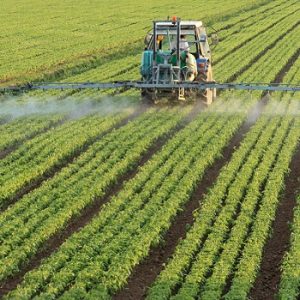
More evidence that low-calorie sweeteners are bad for your health
Studies show that artificial sweeteners can raise the risk of hypertension, metabolic syndrome, type 2 diabetes and heart disease, including stroke.

Figures

Figure 1. Residues of glyphosate and AMPA in individual soybean samples (n=31). For organic and conventional soybeans, glyphosate residues were below the detection limit.

Figure 2. Discriminant analysis for GM, conventional and organic soy samples based on 35 variables. Data was standardized (mean = 0 and SD = 1).
References
American Soy Association, Soystats. 2013. 16-5-2013.
Annett, R., Habibi, H. R. and Hontela, A. 2014. Impact of glyphosate and glyphosate-based herbicides on the freshwater environment. – Journal of Applied Toxicology DOI 10.1002/jat.2997.
Aumaitre, L. A. 2002. New feeds from genetically modified plants: substantial equivalence, nutritional equivalence and safety for animals and animal products. – Productions Animales 15: 97-108.
Benbrook, C. M. 2012. Impacts of genetically engineered crops on pesticide use in the U.S. – the first sixteen years. – Environmental Science Europe 24:24.
Binimelis, R., Pengue, W. and Monterroso, I. 2009. “Transgenic treadmill”: Responses to the emergence and spread of glyphosate-resistant johnsongrass in Argentina. – Geoforum 40: 623-633.
Bøhn, T., Cuhra, M., Traavik, T., Sanden, M., Fagan, J. and Primicerio, R. 2014. Compositional differences in soybeans on the market: Glyphosate accumulates in Roundup Ready GM soybeans. – Food Chemistry 153: 207-215.
Cuhra, M., Traavik, T. and Bøhn, T. 2013. Clone- and age-dependent toxicity of a glyphosate commercial formulation and its active ingredient in Daphnia magna. – Ecotoxicology 22: 251-262 (open access). DOI 10.1007/s10646-012-1021-1.
Duke, S. O., Rimando, A. M., Pace, P. F., Reddy, K. N. and Smeda, R. J. 2003. Isoflavone, glyphosate, and aminomethylphosphonic acid levels in seeds of glyphosate-treated, glyphosate-resistant soybean. – Journal of Agricultural and Food Chemistry 51: 340-344.
EC . Review report for the active substance glyphosate. 6511/VI/99-final, 1-56. 2002. European Commission. Health and Consumer Protection Directorate-General.
Forbis, A.D., Boudreau, P. 1981. Acute toxicity of MON0139 (Lot LURT 12011)(AB-81-074) To Daphnia magna: Static acute bio- assay report no. 27203. Unpublished study document from US EPA library
Harrigan, G. G., Ridley, G., Riordan, S. G., Nemeth, M. A., Sorbet, R., Trujillo, W. A., Breeze, M. L. and Schneider, R. W. 2007. Chemical composition of glyphosate-tolerant soybean 40–3-2 grown in Europe remains equivalent with that of conventional soybean (Glycine max L.). – Journal of Agricultural and Food Chemistry 55: 6160-6168.
James, C. Global Status of Commercialized Biotech/GM Crops: 2012. ISAAA Brief No. 44. 2012. ISAAA: Ithaca, NY.
Kleter, G. A., Unsworth, J. B. and Harris, C. A. 2011. The impact of altered herbicide residues in transgenic herbicide-resistant crops on standard setting for herbicide residues. – Pest Management Science 67: 1193-1210.
McAllister, W., Forbis A. 1978. Acute toxicity of technical glyphosate (AB–78–201) to Daphnia magna. Study reviewed and approved 8–30–85 by EEB/HED
Mesnage, R., Defarge, N., Vendômois, J. S. and Seralini, G. E. 2014. Major pesticides are more toxic to human cells than their declared active principles. – BioMed Research International http://dx.doi.org/10.1155/2014/179691.
Monsanto . Residues in Roundup Ready soya lower than conventional soy. http://www.monsanto.co.uk/news/99/june99/220699_residue.html. 1999.
Moore, L. J., Fuentes, L., Rodgers, J. H., Bowerman, W. W., Yarrow, G. K., Chao, W. Y. and Bridges, W. C. 2012. Relative toxicity of the components of the original formulation of Roundup (R) to five North American anurans. – Ecotoxicology and Environmental Safety 78: 128-133.
Pollak, P. 2011. Fine chemicals: the industry and the business. – Wiley.
Shaner, D. L., Lindenmeyer, R. B. and Ostlie, M. H. 2012. What have the mechanisms of resistance to glyphosate taught us? – Pest Management Science 68: 3-9.
USDA. National Agricultural Statistics Service. 2013. 16-5-2013.

Please subscribe me to your newsletter mailing list. I have read the
privacy statement